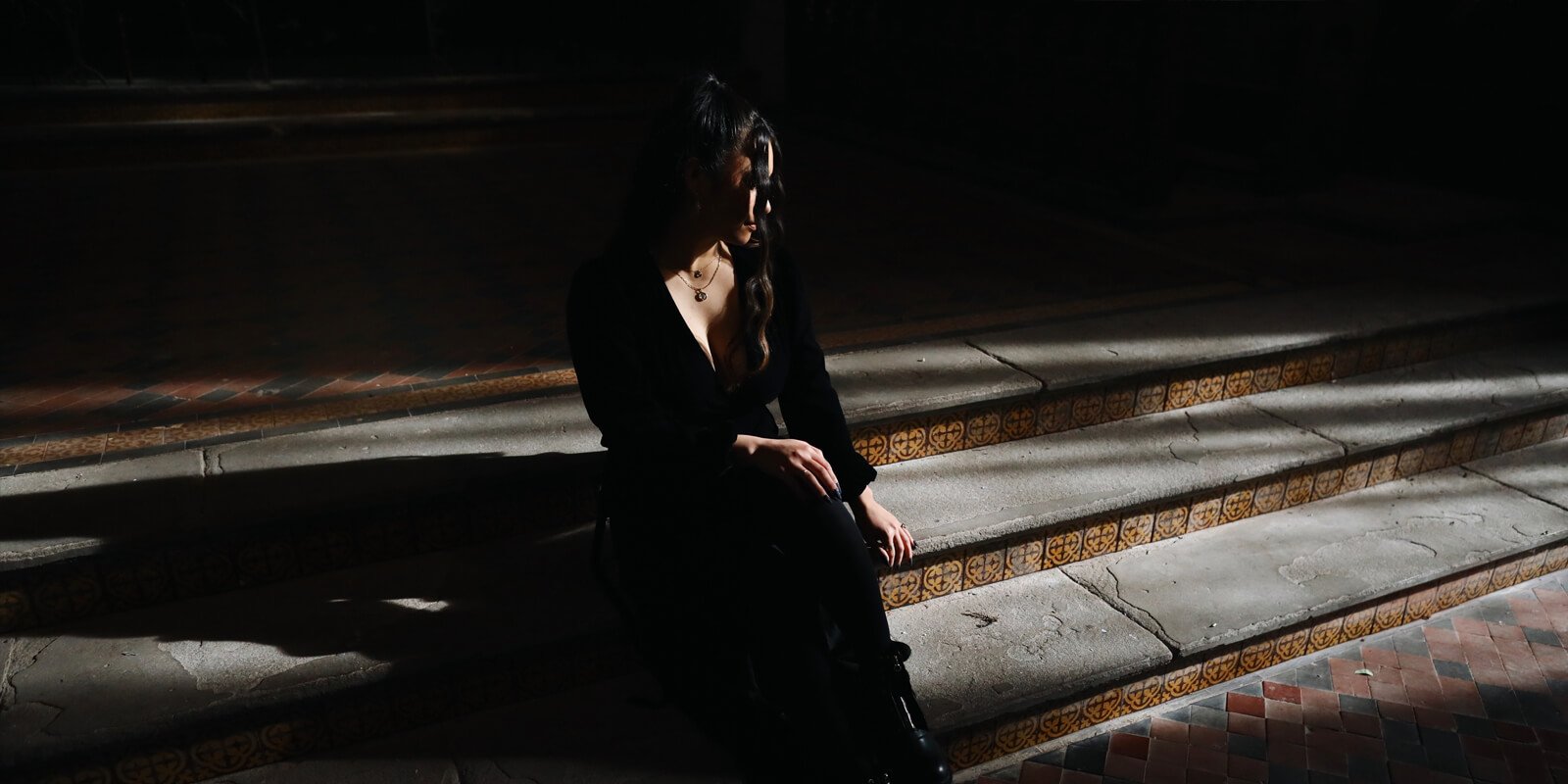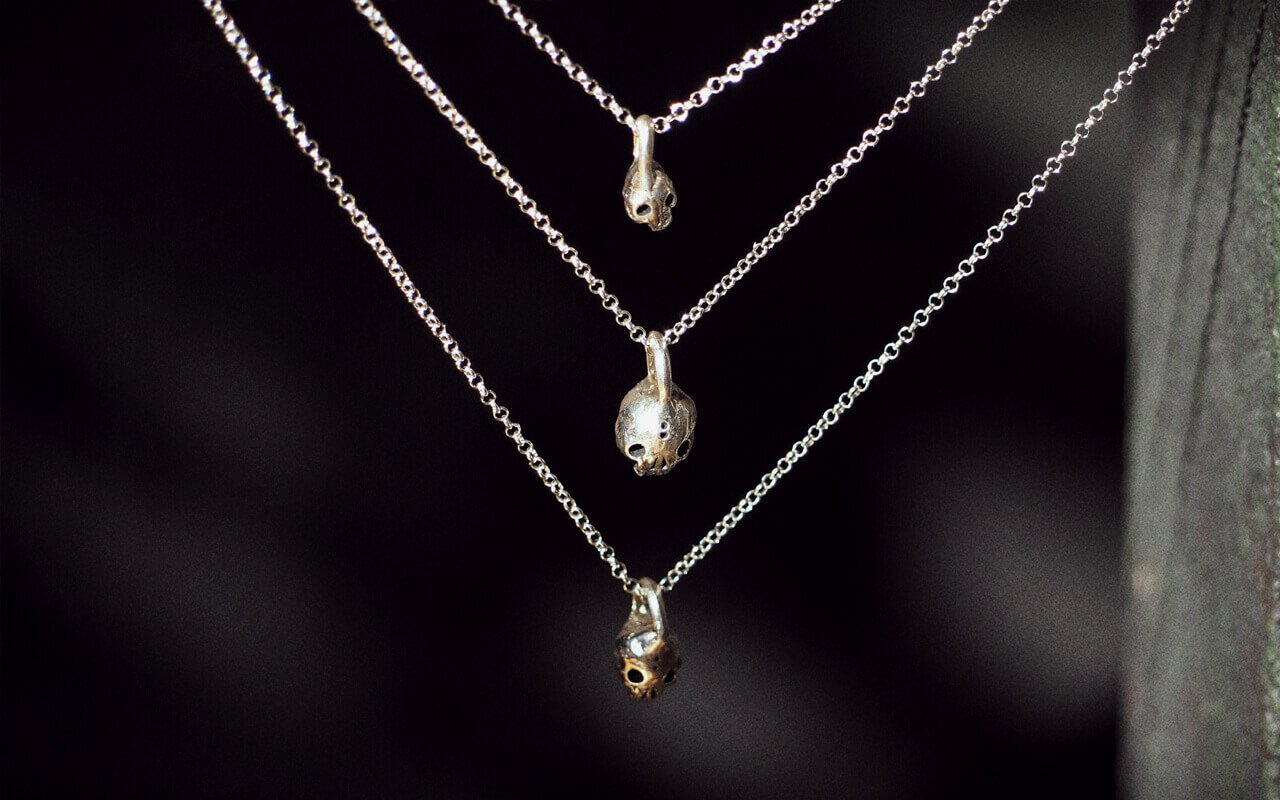The dark history of Memento Mori jewellery (and why we still love it today)
Pic: The Costa Sisters
Memento Mori jewellery isn’t just an adornment for counterculture icons and goths; it also has a super cool history. Learning the story behind the style will help you understand what makes these treasures special and why they’re so meaningful to wear.
So, without further ado, here’s my super brief history of Memento Mori jewels, what the designs mean, and how I use the ancient art of ‘lost wax casting’ to bring them to life!
What is Memento Mori jewellery?
Memento Mori jewellery can be traced all the way back to the 16th century. The name is Latin for “remember that you will die” because, at that time, death was a big part of life. Mortality rates were higher, and lifespans were much shorter than they are now. Memento Mori jewellery was a reminder to live well because death isn’t far behind.
Although the sentiment of 'living well' was initially meant with more of a religious undertone, I prefer to think of it as the original 'YOLO'! It symbolises the maxim of ‘live well today because you only live once’.
The most common historical jewellery pieces from this time are the signet-style ring with skull motifs. I love these simple, original designs so much that they’re one of the first styles I started making.
Over time, the style morphed into memorial jewellery, which the Victorians popularised. Memorial jewellery (most commonly a golden and black enamel band) usually honours one specific person with an engraving of a message, initials, or dates.
It may be centuries old, but many people still really connect with the idea of Memento Mori jewellery. Skulls and roses, symbols of death and life respectively, are still cherished in counterculture by goths and rockers. Memento Mori is still being used to honour the natural process of death, too. People have contacted me about commissioning memorial pieces, or reworking inherited treasures, which I’m always very touched by. Like a memorial tattoo, you can load jewellery pieces with hidden meaning and keep it secret for yourself.
Custom made Memento Mori inspired skull and roses ring.
Inside the ancient art of Memento Mori jewellery making
I start the process with my antique toolset (for extra authenticity) and the lost wax casting method. I hand-carve the wax and send it off to casting experts in Birmingham who attach it to a sort of tree with little branches that link each piece to the main trunk.
The whole thing is encased in something called ‘investment’, which is a bit like Plaster of Paris. When it’s heated up, the investment hardens, and all the wax evaporates (hence the name ‘lost wax’!), leaving a perfect cavity for the molten metal.
The metal flows down the ‘trunk’ of the tree and through the branches into the investment mould. After that, the investment is broken apart to reveal the finished jewellery piece. Once the investment is smashed, that mould is gone forever — your piece is totally unique and one of a kind.
The castings are sent back to me so I can clean and finish them by hand in my workshop. I save and recycle the tiny metal sprues that are attached to the finished castings, just as they would have done in the 16th century — they get a second life as Memento Mori inspired Unburied Skulls and Unburied Hearts.
Death’s design: bringing historic jewellery into the modern age
The great thing about a style as timeless as Memento Mori is that it hardly needs updating — modern consumers still get it and they still love it. In fact, I started designing Memento Mori jewellery because I wanted a piece of skull-themed luxe alternative jewellery that wasn't super cutesy or a huge knuckle duster.
The Blanche ring and Valancourt earring and necklace are some of my earliest designs inspired by historic Memento Mori pieces. I’ve stylised my 3D skulls as direct descendants of the early 2D designs found in 16th century jewels. My designs use the same jawless rounded skull with three dot detailing on the forehead — quite common in the older jewels and used to symbolise the sutures in the skull.
The Villeroi skull signet ring is my most faithful interpretation of those 16th century Memento Mori rings. It has the classic skull and crossbones motif to act as the all-important mortality reminder — the core of all Memento Mori jewellery.
The Cheron Mini Skull medallion and the Clairval Skull medallion are the necklace versions of these ancient rings, so people who aren’t into rings can still pay homage to the reaper!
Wearing the Morano spiked hoop earrings, and the Cheron mini skull medallion necklace.
Pic: The Costa Sisters.
Because the Memento Mori style is dark and timeless, the designs are still popular with the alternative crowd. Skull jewellery is a mainstay for goths, rockers, metalheads, and anyone who enjoys alternative music in all its dark glory. Being close to death and dark subject matter is all part of the territory. Skulls, roses, and bones are iconic within heavy music and counterculture, so it’s no surprise Memento Mori jewellery is still popular centuries down the line.
You can browse my full collection including one-off pieces here. If you’ve got any questions, I’d love to hear from you! Find me on Instagram or drop me a message.






